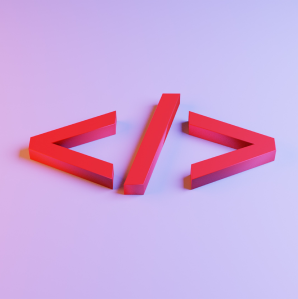Surely, you’d noticed a boom of online education market. By 2025, it’s going to reach $350 billion. A couple of years ago, ed technology investments worldwide reached in US $18.66 billion. Impressive, right? We see education app development like a promising investment today. That’s why, we gathered basically all necessary practical insights for you to go ahead with it.
It’s no secret that COVID-19 outbreak has influenced the growth of an e-learning segment. By mid-April 2020, 94% of global learners were affected by the pandemic, representing 1.58 billion children and youth, from pre-primary to higher education, in 200 countries.
We have noticed an edtech industry rise in our business, too. Since the outbreak started, several clients came to us with a request to develop an edtech app for them. In this article, we’ll share with you our experience and practical guidelines.

Must-have Features for Your Education App
We’re going to start from the most essential part for any education app development – functionality definition. Every time we’re developing an app at Fulcrum, our key priority is to understand its business goals and what functionality it should comprise. Actually, outlining app’s functionality is what defines scope of our development process. For edtech apps, it goes as well.
To make this section more practical, we’re going to use & analyze real cases from our experience. No theory, just reliable practical facts. Let’s take one of Fucrum cases – KOR, an online platform in Norway, which allows booking driving programs and lessons.
Outlining which features to develop for this app was both interesting and challenging at the same time. It’s due to KOR’s specific industry focus – driving education. While defining its functionality, we had to consider the needs of all involved stakeholders, specifics of driving schools, and local education system.
We started with describing app’s customer types. In our case, each customer portrait was formed according to their needs, goals and personal characteristics. So, in KOR, we had following 4 stakeholder categories:
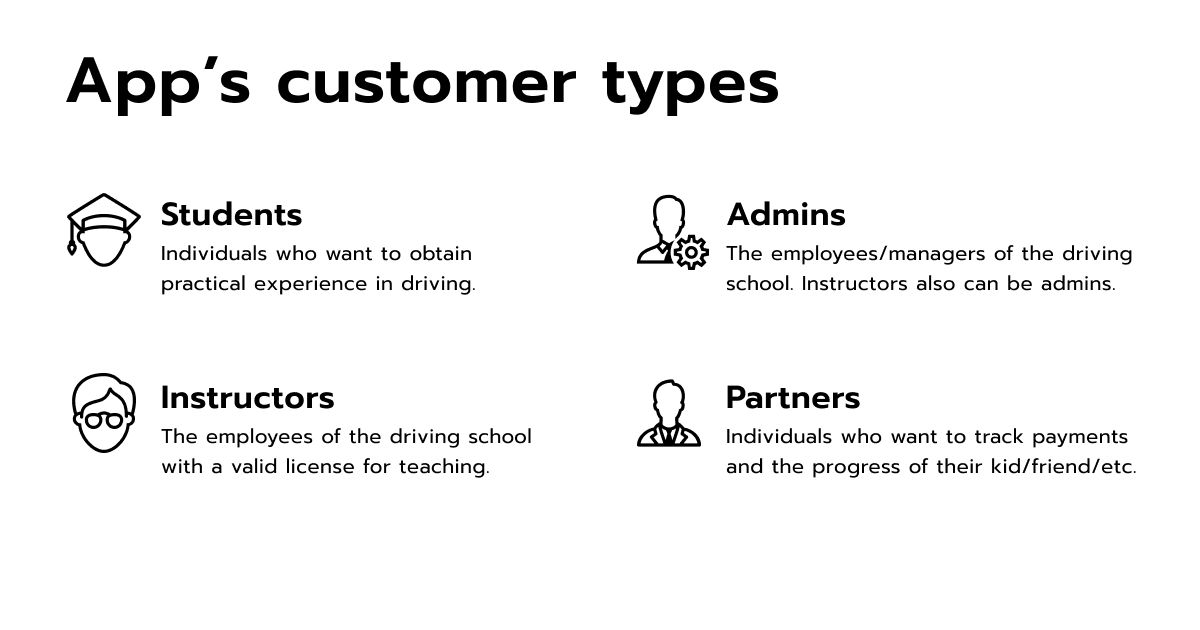 App's customer types
App's customer types
Based on KOR, we can deduce a formula of must have features for any educational app.
Read more: How to Develop a Mobile App Architecture for E-Learning Project
Must have features to implement:
- Registration. This option must be present in all user categories. In KOR, we represented via E-mail and SMS confirmation.
- Main screen. Home screen is created to provide quick access to all parts of the application. On the main screen, users may be able to see upcoming and past classes, and some statistics about their lessons.
- ‘Invite a friend’ option. Don’t forget about the user’s possibility to share your app with others. For example, we offered both in KOR and Vuc^it users a special link to share it with friends or a certain promo code.
- Profile settings. The app should have a basic section with personal information (such as name, surname, etc) available for all user types. Scheduled/visited classes and lesson lists may also be displayed in the user’s profile.
- Payment settings. If you’re creating an app where users should buy lessons or courses, don’t forget to add payment settings (in our case they were added to students’ and partners’ apps only) and payment history.
- ‘Book classes’ feature. For any KOR-like app, ‘book classes/lessons’ feature is the basic one. This option could be available for the students’ and partners’ apps. If there are different lesson types in the app (in KOR, we outlined assessment lessons, regular lessons, review, circuit driving, safety course on road), the user has to make a choice by, for instance, clicking on the icon.
- ‘Survey’ format feature. This functionality may consist of different parts, with yes/no questions about courses/license/resources (for example, in KOR we needed such feature to find out whether a user is younger than 15. If yes – users are notified about the options caused by age limitations). Within the ‘Book’ feature, users choose date, time, location, lesson, program and payment options.
- Lesson cancelation. One of the features not to forget while developing an edtech app is ‘cancel the lesson’ option. Remember, users should have an opportunity to cancel the lesson they don’t need anymore.
- ‘Schedule’ option. If we talk about KOR-like apps, instructors and admins should be able to schedule classes for students to choose and form their schedule.
- Assessment form. If we talk about apps with courses/lessons, add some feedback form after each lesson or a program. For example, in KOR users can evaluate basic instructor skills by clicking ‘thumb up’ or ‘thumb down’ signs.
- Push notifications. Push notificationsare an integral part of your app. They form user’s impression about the app. They also can warn users about upcoming programs or lessons.
- Chat. Your users should be able to reach out to your support team for any assistance quickly and easily. Think about adding notifications from the chat directly to the phone screen. In Vuc^it scenario, we actually developed an entire community.
- Statistics. Almost any user type should have access to some general statistics about the app. It will help them to understand their level of progress, preparation, etc.
We prepared a checklist with the features we implemented for each of 4 KOR app types. You can download PDF file below.
How to Build an Educational App
Edtech market statistical analysis
Right now is an ideal opportunity to really take a look at the uniqueness of your search for an edtech application. To try not to get lost among contenders, you need to explain the best approach to stand apart among them. Start by asking yourself these inquiries:
- What parts of your business need to be improved?
- How can an education application help in doing so?
- How to build overall customer fulfilment?
Other key subjects incorporate your market and competition, time restriction, spending plan and some more.
When we were reached to work on Vuc^it, we realized how important it was to have the right team for the job, that could analyse every corner of the market and the application so we handpicked a dedicated team to work on it. Every team component starting with the Project Manager, Business Analyst, Manual QA, Node.js developer, to the DevOps & React Native developer was carefully thought out.
How good is your content?
Don’t exhaust your clients with extensive content. Utilizing informative videos is a great way to educate and lead the way into a different learning measure. What’s more, remember to compensate the student when they effectively did the job.
Learning applications can be executed as thrilling games which are fun ways of gaining knowledge. When assuming that we’re discussing an instructive application for youngsters, this is particularly fundamental as it’s the best way to send out quality information and have it well received.
While we were working on Vuc^it, we developed all the necessary functionality & feature set to achieve the client’s goals and objectives utilizing the latest technologies available making it as unique and user friendly as possible.
Read more: DoiT Case: How We Created an E-learning Website that Helps Employees Train Soft Skills
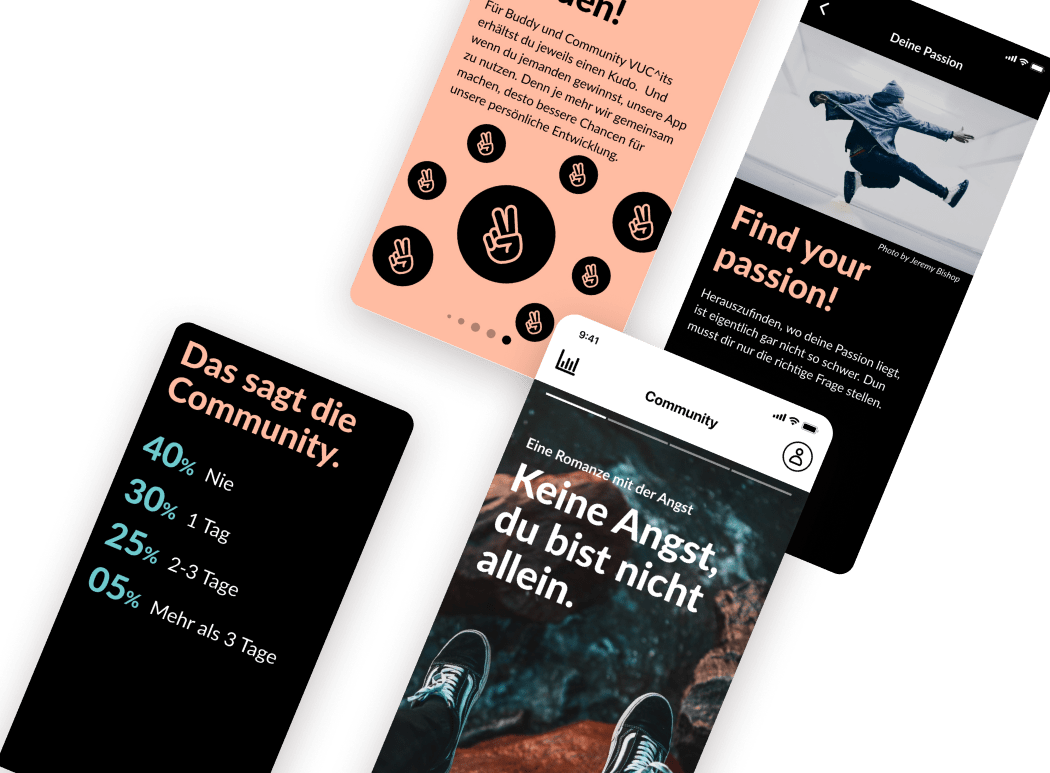
UI/UX design for edtech
The first impression is very important. Students, teachers and schools will only download the application if it is simple, nice, and clear. The bright graphics and interesting sound should accommodate the needs of all customers.
Read more: How To Run A UX Audit For A Major EdTech Platform (Case Study).
Testing an educational app
When you have used cases and wireframes on your app, it’s time to test your app’s flow and user experience. Testing will help you know which topics are weak and require more effort for the best UX possible.
In matter of a fact, when we were testing the usability for one of the most famous educational platforms, edX, we got so impressed with the audit results, that we went further and redesigned edX platform on itself.
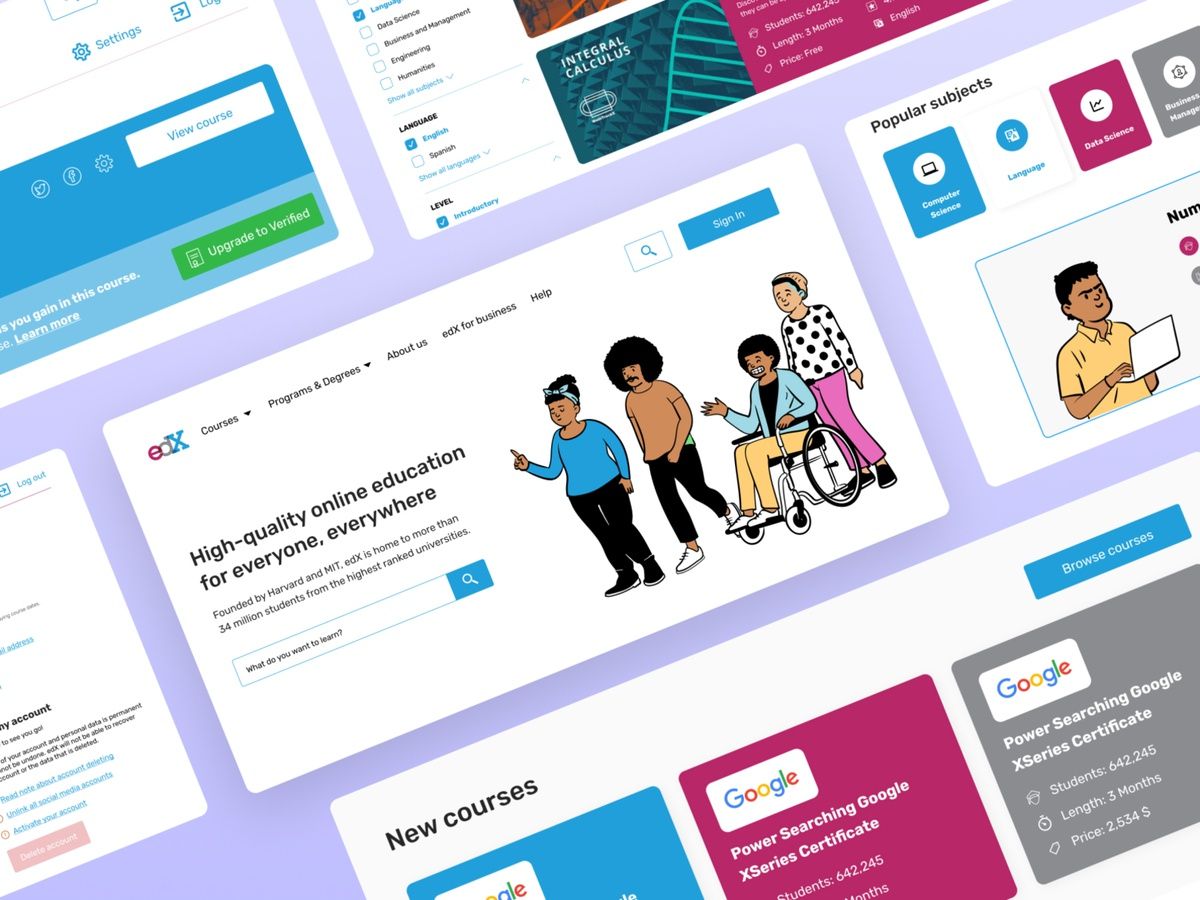 You can check how it turned out: https://dribbble.com/shots/14838826-Concept-for-edX-platform-redesign
You can check how it turned out: https://dribbble.com/shots/14838826-Concept-for-edX-platform-redesign
What Types of Educational Apps are There
Going back to the whole process of an education app creation, product’s idea is also something you need to consider. Start with analyzing app types, their profitability, and relevance on the market. While choosing which type of an education app to develop, think how you’ll monetize it. Basically, main edtech app types are:
- Classroom aids: these are apps that are created to be used in the school classrooms. One of their basic features is projecting information and interface on the whiteboard.
- Course-specific apps: such apps go alongside some courses and, generally, aren’t used separately.
- Reference apps: this type mostly provides educational resources like online encyclopedias, dictionaries, etc.
- Assessment platforms: they help to test and assess users, their knowledge of the information and achieved score.
- Industry-specific apps: these are apps for highly specific niche markets, such as medical or driver educational software. For example, let’s take KOR – the app we developed for driving schools in Norway.
- Teacher tools: instruction programs which help to improve teachers’ effectiveness.
Why Investing in Educational Apps
Probably, as any entrepreneur, you’re wondering why edtech is worth your time and money resources. That’s predictable. So, we made some research and found out that edtech industry may be highly profitable not only due to some situational factors (such as COVID-19 outbreak), but also due to its internal specifics. Here’s some useful info which can be useful both for you and for the investors you’re pitching.
What makes edtech so attractive?
- High demand. Only in the USA, statistics demonstrate that 64% of schoolchildren use digital learning tools daily. And with ongoing lockdown, this number may grow.
- A wide solvent audience – edtech industry comprises almost all segments from small children to office workers.
- Its common monetization models include paid content, lessons, programs and other in-app purchases. It means that you don’t need to invent new ways to monetize your app.
- E-learning apps are in high demand among corporations, since they provide opportunities to increase staff qualifications. What’s good here for you is that corporations make up one of the most profitable segments in the market. They are ready to spend money on developing their employees.
- Availability of public grants. CoSN, the premier professional association for school system technology leaders, conducted an independent study last year. According to it, 43% of respondents among edtech startupers overcome IT budget issues by finding money via grants.
Global E-learning Market
Integrating technology with education requires a deep market research. While working on KOR, our business analyst researched not only global market of apps for driving schools but also specifics of the local one.
Talking about some general trends of the edtech market, the lockdown is increasing demand for e-learning platforms, driving the market to explode over the next 5 years. It is estimated that mobile e-learning market can reach $37.6 billion by the end of 2020 and is expected to grow at a CAGR of 36.3% from 2019 to 2026.
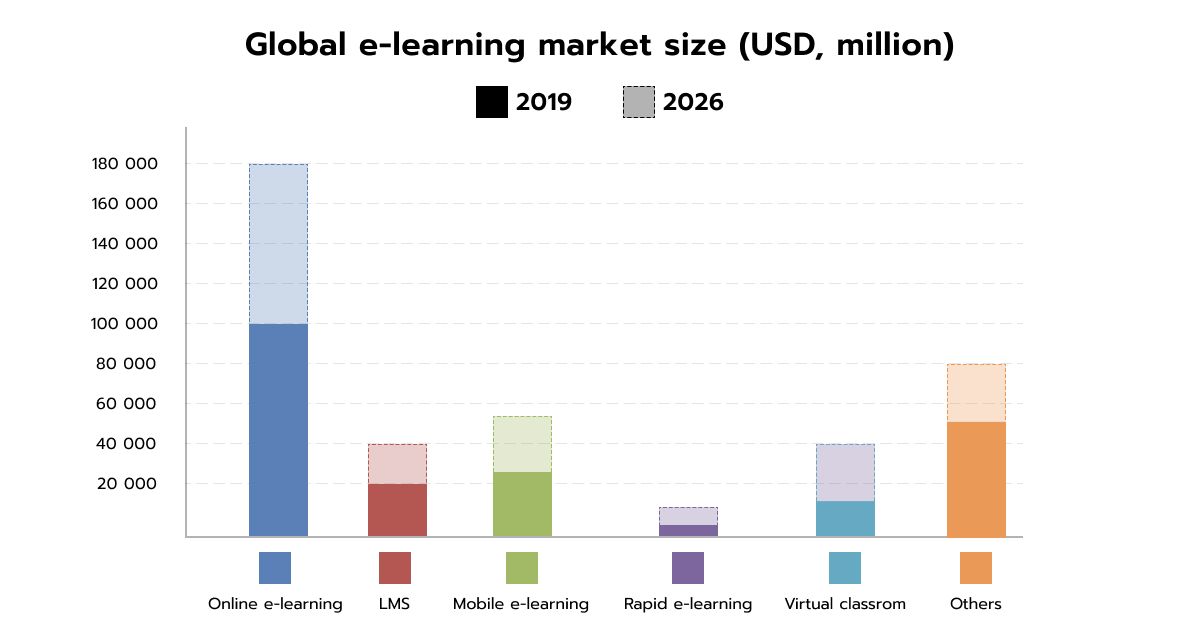 Global e-learning market
Global e-learning market
Global e-learning market sizeCurrently, there are over 200,000 edtech apps just on the App Store. So, what we see is that although its most niches are already occupied, the market is still growing.
3 key factors to drive edtech market growth:
- Constantly growing demand for mobile apps and social media.
- Technology is gaining its momentum.
- The number of AR & VR apps will grow relentlessly. An astonishing $3.67 billion went to 120 AI-based learning companies last year.
Real Cost of Edtech App Development
When you finished with your business idea and product’s functionality, you’ll probably want to know how much money your future app costs. Having worked on dozens of the projects ranging from super small for multiyear ones, we surely know what constitutes app development costs. So, let us spill some beans:
- Choice of platform. There are 3 most used platforms – Web, Android, iOS. When choosing iOs and Android applications at once, you have to be ready to double the price, since they require different programming languages.
- Software development rates. It is also crucial to hire a proper team of developers for the project. Remember that developers from various locations will have different hourly rates. Here is a short table of software development rates according to the region by Fulcrum:
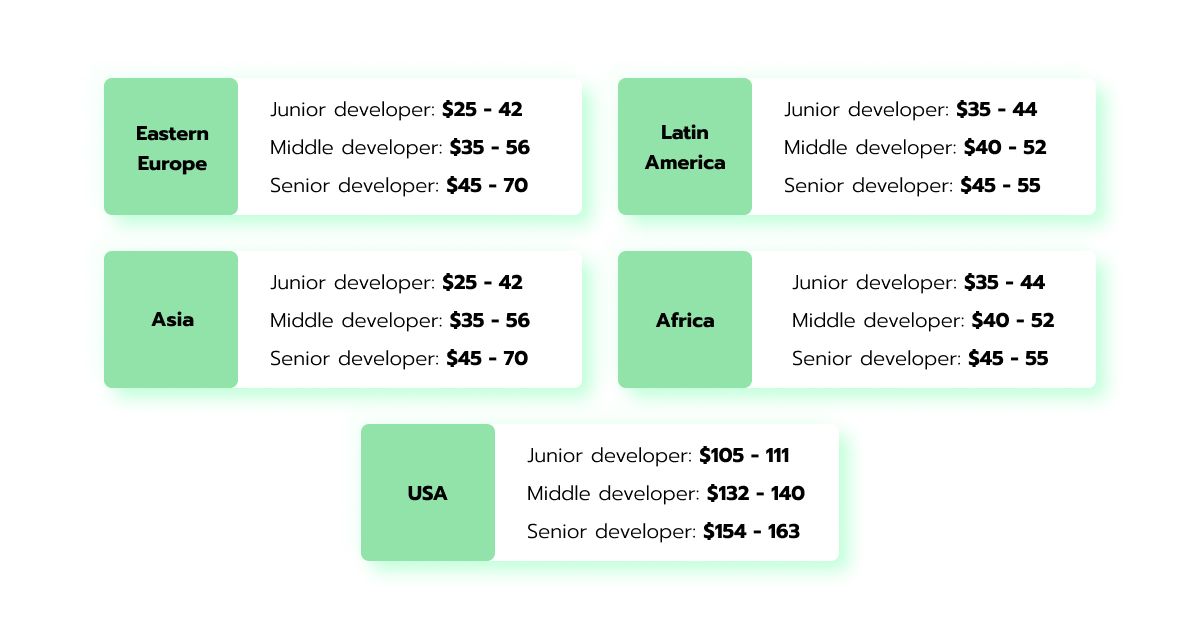 Offshore development rates
Offshore development rates
Read our guide with the detailed offshore development rates by country here.
- Scope of work. Surely, the more complex app you want to build – the more development time & costs it requires. Estimate your app’s approximate costs with our online Calculator.
- Design. Developing a sophisticated and user-friendly UX/UI design for an educational app is a pain for every edtech startup. It may be a tedious and costly cycle, but the most significant one. Consumers prefer to use applications with intuitive and modern interfaces especially if they’re using the app not for fun, but for studying.
- Project Management. It may seem as an unnecessary stage, but it is not. Better leave your project management for a professional, since any mistake at this field can cost you too much.
- Quality Assurance (QA). This area is vital for tech projects. The main point is to test the applications perfectly in order to find and fix some bugs before the release and come out to the market with flawless product.
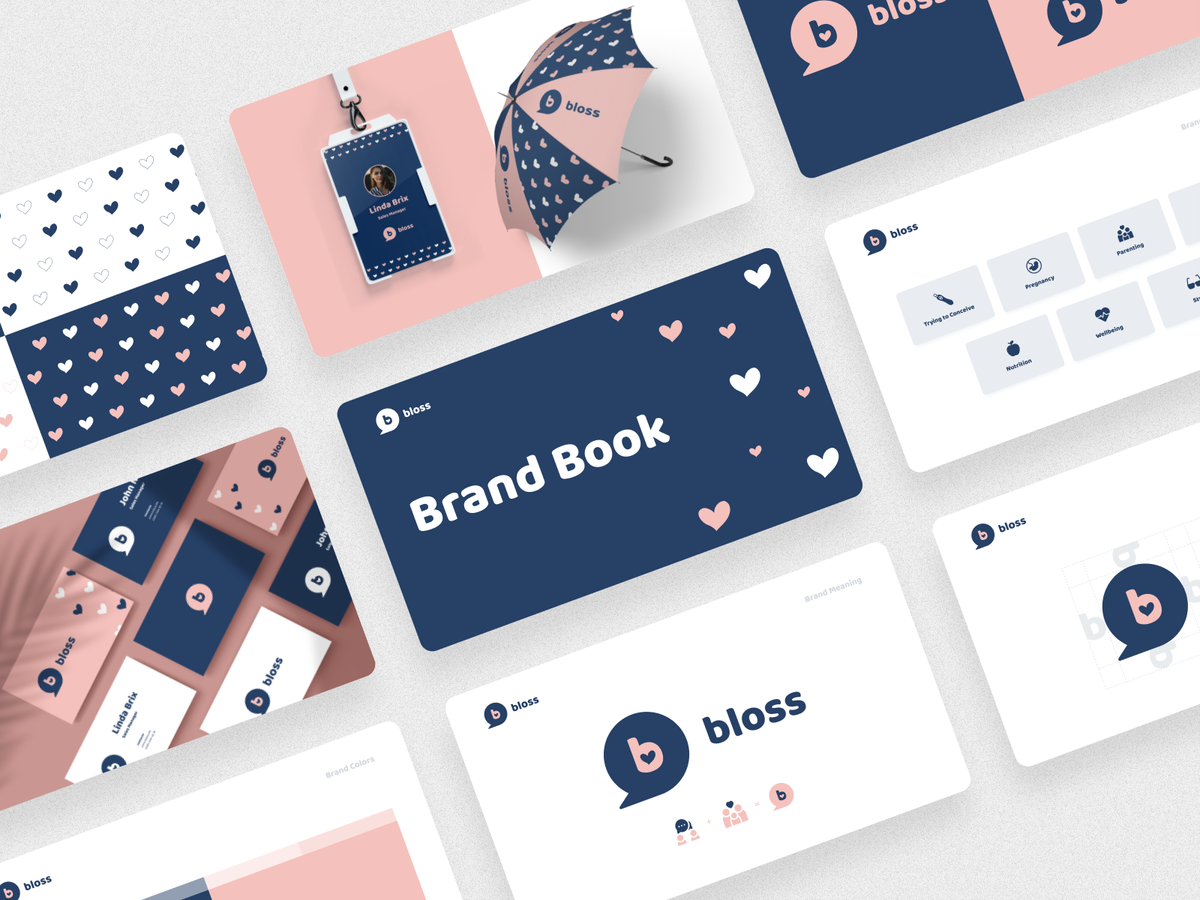 Bloss – an education platform for parents – which we’ve released recently.
Bloss – an education platform for parents – which we’ve released recently.
How to Monetize the Educational App
Since we started to talk about costs and money, it’s good to think how your edtech app will bring profit. There are 3 main strategies that exist on the running market – freemium, advertisementsand paid applications. Choosing one or connecting two of them allows you to make money from the developed product.
- Freemium. It is a usual model for every app. Users have to subscribe in order to have access to the advanced features. It works in the same way with ed apps.
- Advertisements. It is the most common way to monetize an application, especially if your app is free.
- Paid app. Super basic option – clients pay for an advancement and usage of an e-learning app.
Read more: Guide to Mobile App Monetization from Fulcrum Rocks
Take, for example, Google Classroom and EdX, two mega tech giants in the educational app development industry, let´s see what they have done to make their bucks:
Google Classroom
Google is on another level of monetizing its application. They don’t do it. A different approach is taken, which is:
- Internet Traffic – building traffic to many others of their Google Products.
- Mining Habits – learning about your searching habits to tailor future ads.
Their primary focus is providing the best user experience possible, destroying the competition and taking first place in the education technology industry.
edX
edX is a major, global online courses provider taking second place as a credible platform for education and learning in the edtech industry. Given their role in the industry, their main way of monetizing their application is through:
- Platform licensing – pay to have your course on the website.
- Certifications – certified courses and specializations where you get a certificate.
- Paid examination – charging for the final exam while courses are free.
All those routes will be significant when building up your reputation and on the way, you will also learn how to make an Edtech Website.
Success Stories of Edtech App
Coursera
It is the most famous web based learning platform established in 2012. It provides a wide range of online courses, specializations, degrees, expert and educational programs. Besides, Coursera works with colleges, universities and different associations to offer their students online courses, accreditations, and degrees in a number of subjects. The startup raised an underlying $16 million at a subsidizing round. In 2020, the organization declared it had brought $130 million up in Series F increasing its value to $2.5 billion.Key differentiators:
- multi certified program
- homework checking
Khan Academy
Khan Academy is a non-profit educational association founded in 2008 by Salman Khan. Its main goal is to help with teaching understudies with online tools. The association creates short exercises in a format of video recordings. Its site also offers valuable practical activities and materials for educators. All resources are available for free to platforms’ customers. These days, its subsidizing comes to $10.2 million.Differentiators of Khan Academy:
- Progress tracking
- Practical exercises
- Learning in multiple languages
Remind
Remind is an educational communication platform that helps educators reach students and parents where they are. Gathering learning is a proficient practice to fill in learning holes in understudies. Remind permits to remain connected with your school network wherever you’re. It focuses on 3 core groups – students, teachers, parents – that are interconnected on the platform.With the class code, users can receive regular updates on classroom activities. Students can also use Remind in the format of chat in order to share messages, photos and handouts to the whole class, submit tasks, and clear out some questions with the friends, both individually and collaboratively.Differentiators of Remind:
- Platform for sharing
- Translations in the chats in more than 70 languages
Photomaths
The learning cycle in Photomath is entirely basic. You snap a photo of transcribed or printed questions. At that point the application itself shows you how to tackle those inquiries through step-by-step clarifications and directions.Differentiators of Photomath:
- Interactive graphs
- Scan of printed/handwritten problems
- Multiple solving methods
- Animated instructions
Edtech projects realized by Fulcrum Rocks:
- Kör is an online platform in Norway which allows booking driving programs & lessons online.
- Bloss is an education and lifestyle platform that helps parents and parents-to-be with starting a family and raising their little ones.
- VUC^it is a digital coach that strengthens your social, emotional and creative skills to master remote work.
- DoIt is an adaptive platform for learning. It features various assignments for corporate employees who want to improve.
Read more: How to Create Educational Website Design that Blows away: Bloss Case
Fulcrum’s Expertise
Our journey has come to an end. You are now knowledgeable on what you require to develop your educational application. Not only that, but now you know how to scale it and monetize it successfully. What are your next steps?
At Fulcrum, we start any edtech development with the discovery phase where we will go into further details about the product developing phase. To be precise, based on the product information & requirements we got, we figure out the:
- Mindmap, represent the information visually.
- Suitable tech stack & functionality, use the latest technologies available.
- Project Roadmap, steps you are going to take to align the product vision.
- Timeline & Cost, estimation of how long it will take and how much it will cost.



